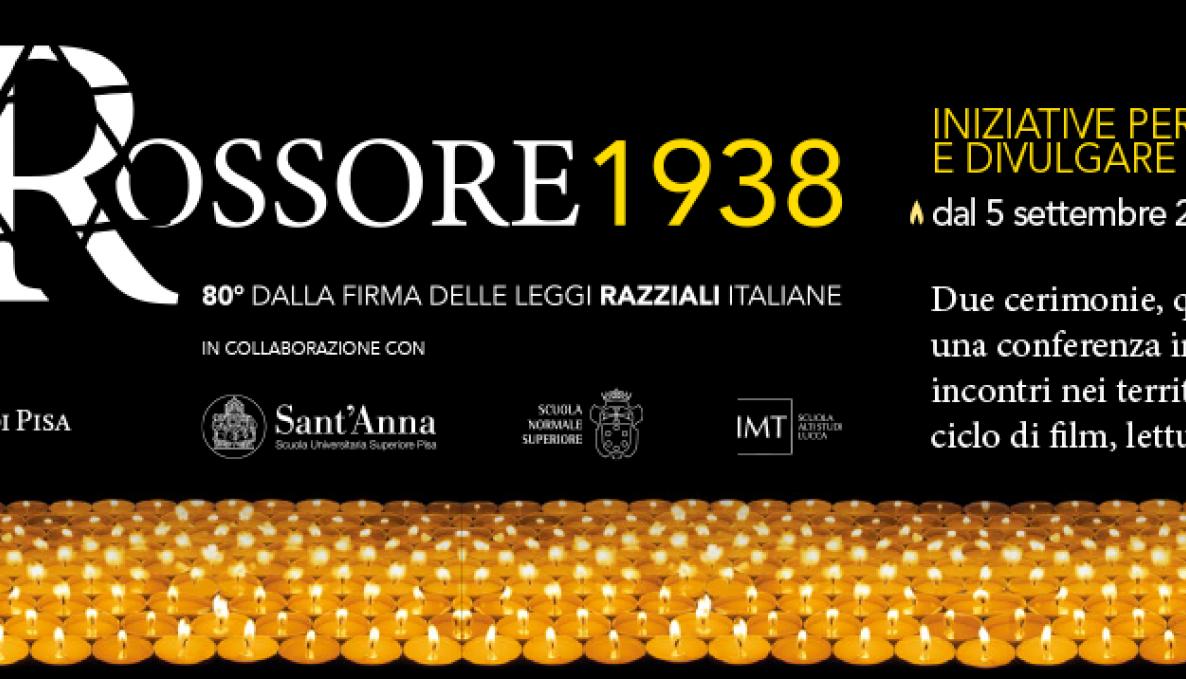“San Rossore 1938”, 80 years of silence. Academia now takes full responsibility after the imposition of the racial laws in Italy. Sant’Anna School and rector Pierdomenico Perata organize commemoration events in Pisa

80 years after the imposition of racial laws in Italy (5 September 1938, San Rossore - Pisa), Italian academia takes full responsibility of its actions and complicity in antisemitism since the “Oath of Fidelity to Fascism” in 1931. For the first time, the Academia and Paolo Mancarella, rector of the University of Pisa, will publicly acknowledge their responsibility and offer their apologies at the commemoration ceremony “Remembrance and Apologies Ceremony”. The event “San Rossore 1938”, supported by Scuola Normale Superiore; Scuola Superiore Sant’Anna; Scuola IMT Alti Studi Lucca; the Conference of Italian University Rectors (CRUI); the Union of Italian Jewish Community (UCEI); University of Firenze; University of Siena; Università per Stranieri di Siena; Regione Toscana and many more Tuscany private institutions, will be held in Pisa - Palazzo della Sapienza, on Thursday, 20 September 2018.
On 5 September 1938, at his Tuscan residence in San Rossore, King Victor Emmanuel III signed the act 1381 for the Defence of the Race: the Royal Decree Law concerning Jews of foreign nationality. The law supported discrimination against Jews in Italy. Italian universities responded to anti-Semitism with complicity and collaboration; Pisa University expelled 20 professors and 300 students. On 5 September 2018, on the eightieth anniversary of the imposition of the racial laws in Italy, the University of Pisa, Scuola Normale Superiore and Scuola Superiore Sant'Anna annouced a series of events to emphasize the need for future generations to learn and remember the Holocaust. On 20-21 September, Gaetano Manfredi, President of CRUI, and Senator Liliana Segre will participate in the International Conference “A ottanta anni dalle leggi razziali fasciste: tendenze e sviluppi della storiografia internazionale sull’antisemitismo e la Shoah”.
The initiative “San Rossore 1938” includes 3 exhibitions: “Ebrei in Toscana XX-XXI secolo” organized by Istoreco-Istituto per la Storia della Resistenza e della Società contemporanea (Pisa, Bastione Sangallo, Wednesday 12 September 2018 – Monday 5 October 2018); “I Giovani ricordano la Shoah” by the Ministry of Education University and Research MIUR and by UCEI (Pisa, Palazzo Vitelli, Lungarno Pacinotti 43, Wednesday 5 September / Monday 5 October) and “1938 – La storia”, about Rome Holocaust Memorial Museum (Parco di San Rossore, Sala Gronchi – Wednesday 5 September / Monday 5 October).
The commemoration events will include educational programs, exhibitions and film screening at Teatro Verdi and Cinema Arsenale.
A media partnership with RAI, RAI Cultura and RAI Storia, has been established to share the “San Rossore 1938” event content, and ensure that this anniversary and the unspeakable suffering of many people will never be forgotten.
“Apologies are due – says Pierdomenico Perata, rector of Sant’anna School, even if they come too late. The Academia’s apology for the pain that has been caused to professors and students it is now compensation for moral damages worth saying. We are simply doing the right thing. All initiatives and actions against anti-Semitism, solidarity with the Jewish community and the protection of students’ rights, are an important contribution long overdue. One noteworthy fact about the Italian Academia, during the years immediately following the “Oath of Fidelity to Fascism”, is that its leading exponents addressed the scientific reasons and the religious implications of the Holocaust perpetrators. It was not until the mid-1960s that scientists and researchers began to discuss in earnest. Our sentiments are finally echoed by members of the academia, our professors Michele Emdin and Barbara Henry, and the media”.



